When it comes to planning for next grazing season, having a grazing plan is critical preparation. Everyone can benefit from grazing planning. You don't have to be a adaptive grazing expert to use a grazing chart.
But getting started with a grazing planning chart can be an intimidating project. If you're planning a grazing chart for the first time, all the cells to fill in with ADAs, ADs, rest periods, AUs can get your head spinning before you even begin.
A grazing chart is a living document. It's not a set-it-and-forget-it one time deal. Use the grazing chart as a guiding tool to think through key grazing decisions before cattle hit your pastures, and to make decisions during the season. This is the most powerful part of a grazing chart!
Use the grazing chart effectively, and it will make you better at grazing management every step of the way.
Five steps to planning with a grazing chart
Step 1: Estimate your pasture inventory
- The first step of grazing planning is to get out and walk your pastures! You should come into grazing planning with an estimate of pasture inventory in each pasture. If you haven't yet, read our post on how to estimate pasture inventory.
- Once you have your pasture inventory, fill it in on the left hand side of the grazing chart. This should be ADAs or SDAs. You use this to compare the relative quality of your pastures.
- Then, multiply by acreage of each pasture to estimate total ADs in each pasture. If you don't know the acres, use Google Earth or PastureMap to draw out and get your acreage.
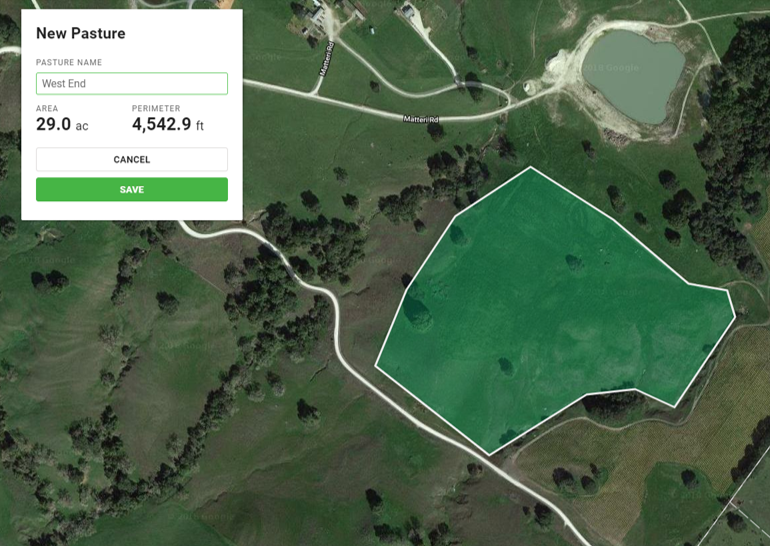 Before you start planning grazing periods, you should know how many ADs are in each pasture. Here's what it looks like on PastureMap - the left column marked ADs.
Before you start planning grazing periods, you should know how many ADs are in each pasture. Here's what it looks like on PastureMap - the left column marked ADs.
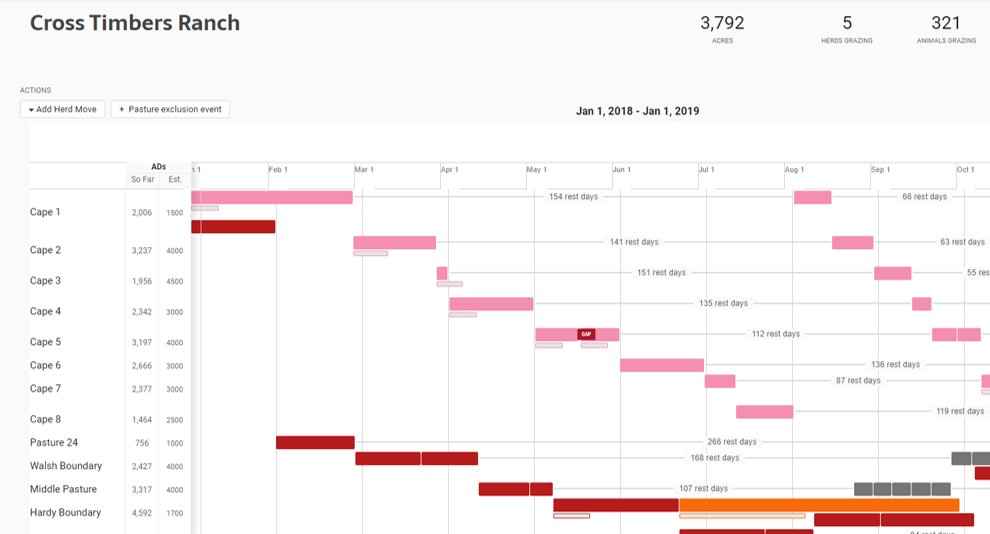
Step 2: Plan out key dates on your grazing chart
Grazing planning starts with planning your grazing around key dates.
- Mark off calving season and which pastures you want to calve in
- Off-ranch days or special events - e.g. a wedding or a field day with visiting guests
- Seasonal periods to keep cattle out of certain pastures - e.g. toxic flowering plants like larkspur, or wildlife habitat and breeding dates
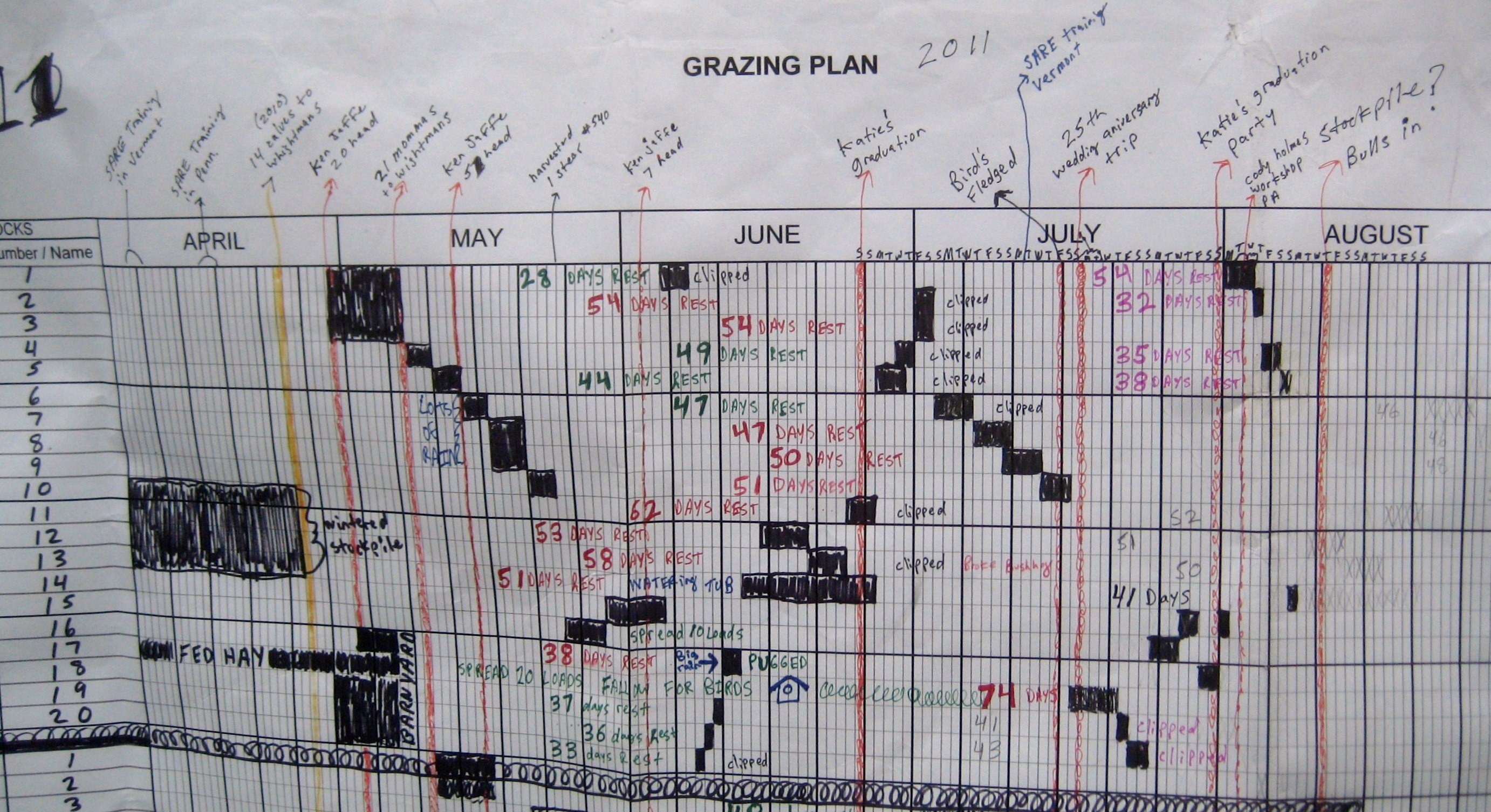
Here's what it looks like to plan grazing exclusion events on PastureMap's grazing chart.
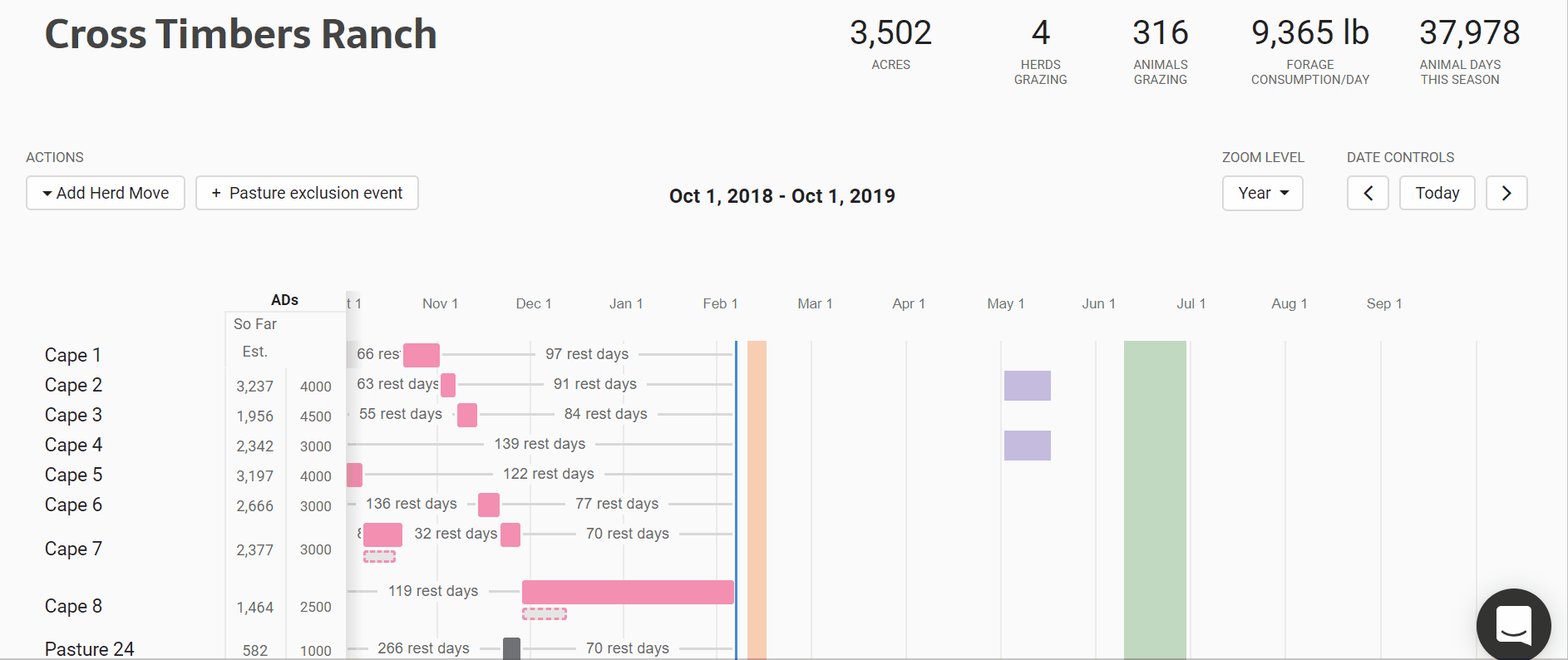
Ready to start grazing planning on PastureMap? Start your free trial to plan this season on our online grazing chart.
Step 3: Estimate stocking rate for the season
For more on how to calculate how many days to graze each pasture, read our post on how to calculate stocking rates and carrying capacity. For each month that you plan to stock a certain number of AUs (animal units), calculate how many days of grazing they will need. For example, if you have 100 head of 800 lb steers, you will have 100 x 0.8 AU, or 80 ADs per day of forage demand.
Match your herd's feed demand with your available forage in ADs in each pasture, to calculate how many days your cattle can graze in each pasture.
A strong cup of coffee with a calculator, or an online stocking calculator like PastureMap's makes short work of this grazing math.
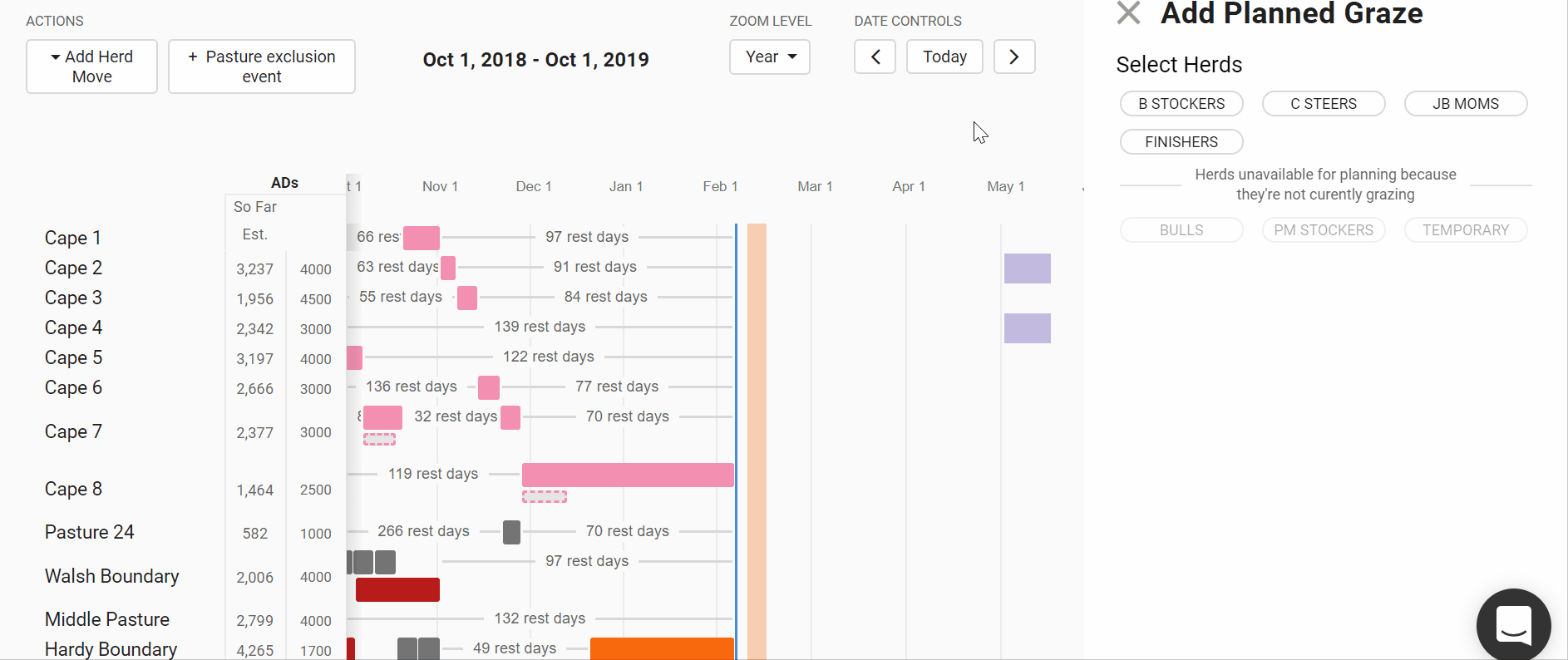
Step 4: Plan out your graze periods and recovery periods
Now it's time to plan out the graze periods. Make sure to plan around your key dates. You may need to plan and re-plan the grazing plan through pastures several times. Your grazing chart is a living document! Laminating a big chart, hanging it on the wall and using a dry-erase pen is a useful way to do grazing planning with your team.
Make sure to think about how your cattle will flow from one pasture to the next around your ranch. It's helpful to have a map pulled up with gates and water infrastructure. This helps you mentally plan the movement of cattle around the ranch. Make sure you have pastures with adequately recovered forage ahead of you. Don't graze yourself into a corner!
You can use either PastureMap or Google Earth to map out pasture names, water, and gate infrastructure. Or get a printed paper map from your NRCS office.
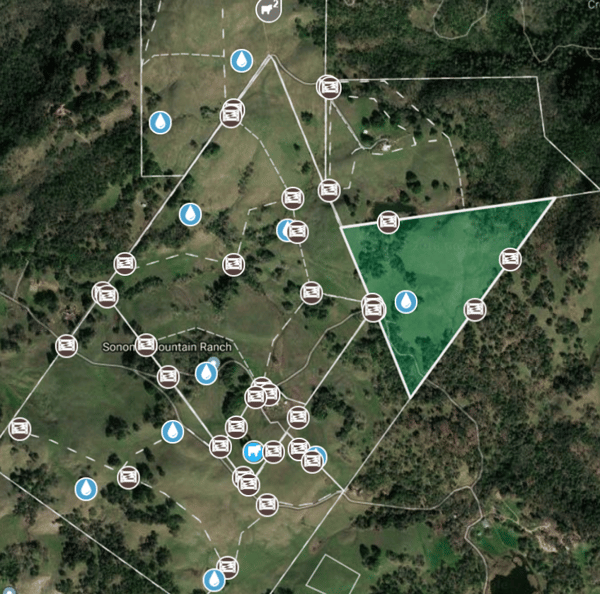
You can also do your grazing planning directly on the map, if you prefer to have a visual path of the planned moves for your cattle.
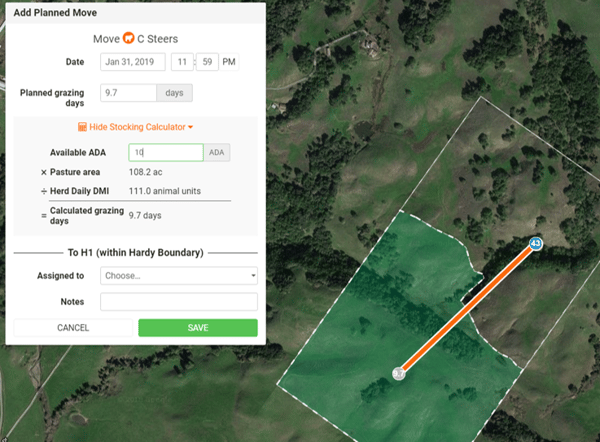
Step 5: Update your grazing chart with grazing records to make better decisions
Again - your grazing chart is a living document for making decisions. h
- As you graze each pasture, update your actual grazing periods against your planned grazing periods. How accurate were you at estimating pasture inventory? Do you need to update your pasture inventory for the rest of the pastures?
- Calculate how many SDAs of forage you're grazing from each pasture. Are you taking more or less forage than you intended?
- Look ahead to see if you're going through your pastures faster or slower than planned. Are you getting adequate recovery on each of the pastures? Do you need to re-plan? Do you need to change your stocking rate?
On PastureMap, we track planned vs actual grazing periods, recovery days, and SDAs for everyone using the grazing chart. All you need to do is log grazing records.
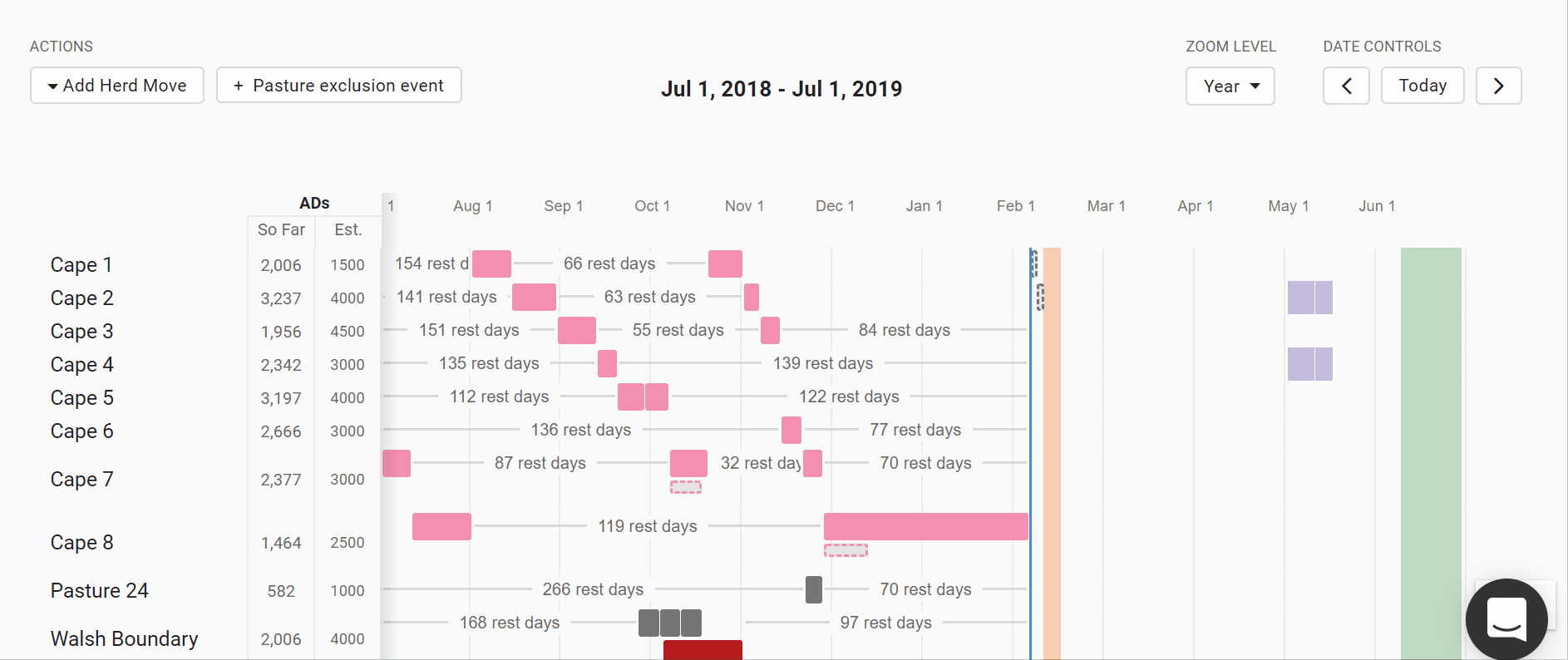
If you need to adjust your future planned moves based on what you're seeing in your actual grazing, we make that easy. Just adjust or delete any planned move and the rest of your grazing plan will adjust with it.
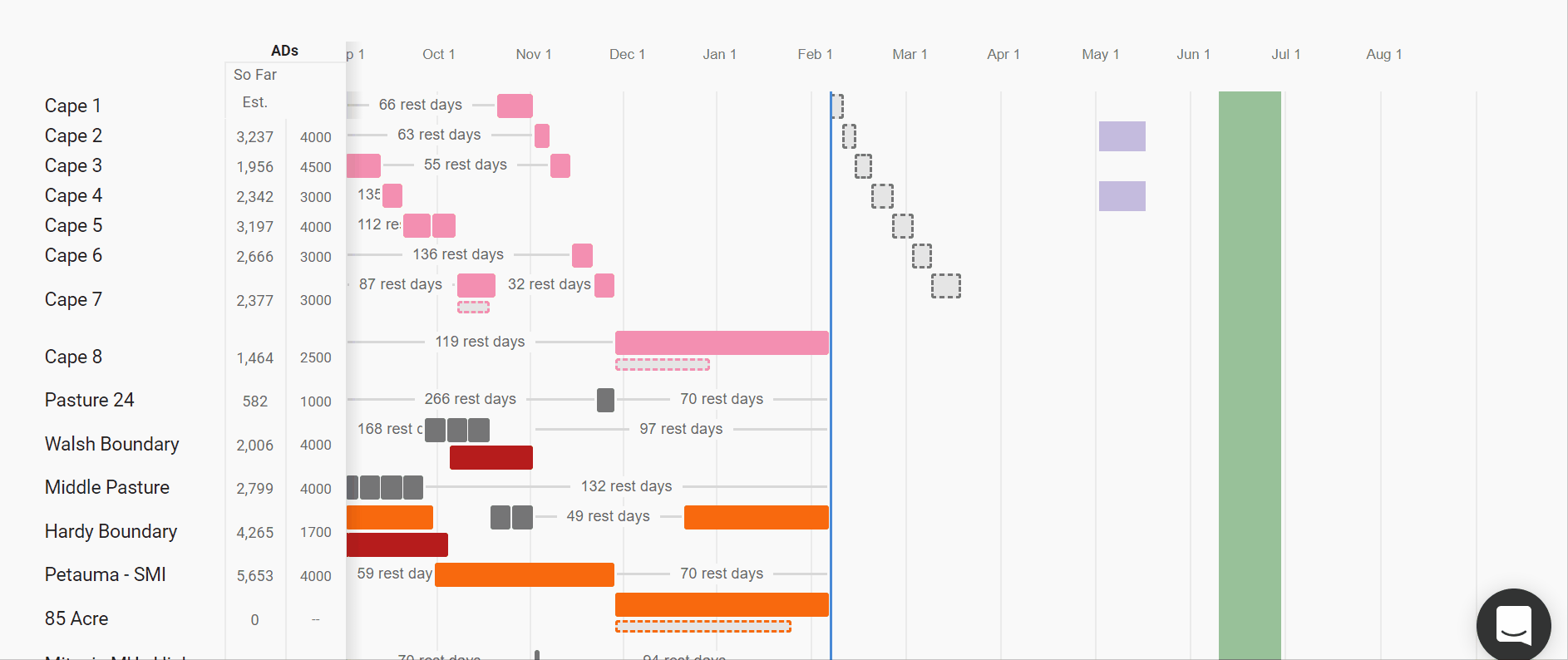
Key Takeaway: Your grazing chart is a living document.
Grazing planning is not a set-it-and-forget it process. The grazing chart is a living tool for you to make better grazing management decisions. Your decisions are what matches forage supply and cattle feed demand throughout the season. This is adaptive grazing management.
Ready to get started? Sign up for PastureMap's free trial to plan next season with our online grazing chart.

